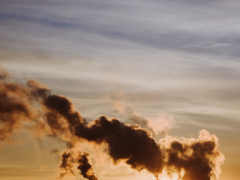Greenhouse gas emission levels continued to rise in 2016
In 2016, total global greenhouse gas (GHG) emissions continued to increase, by about 0.5%, reaching 49.3 gigatonnes in CO2 equivalent. This was mainly due to the rise in non-CO2 emission levels, estimated at around 1%. With a share of about 28%, non-CO2 emissions form a significant share of global GHG emissions.
Global CO2 emission levels remained more or less stable in 2015 and 2016, especially when taking into account that 2016 was a leap year and, therefore, 0.3% longer. The recent slowdown in the increase in CO2 has mainly resulted from lower coal consumption due to fuel switches to natural gas and increased renewable energy in power generation.
These are the main conclusions from the report Trends in global CO2 and total greenhouse gas emissions: Summary of the 2017 report by PBL Netherlands Environmental Assessment Agency.
Emissions in largest countries stabilise or drop, India shows major increase
The five largest emitting countries plus the European Union, which together account for 51% of the world population, accounted for 68% of total global CO2 emissions and about 65% of total global GHG emissions. Of those largest emitters, only India shows a significantly rising trend (+4.7% in 2016). In Russia and the United States, the trend is downwards (both -2.0%) as well as in Japan (-1.3%), whereas in China, the European Union and the group of other G20 members, levels remained more or less the same as in 2015.
Non-CO2 sources make up 28% of global GHG emissions
Non-CO2 GHG emissions comprise about 28% of total GHG emissions (excluding those from land use), and consist of methane, nitrous oxide, and fluorinated gases (F-gases: HFCs, PFCs and SF6). Methane, constituting about 19% of global emissions, is by far the largest category. Its main sources are fossil fuel production (25%), cattle (23%) and rice production (10%).
Emissions from land use and forest and peat fires uncertain
The figures quoted above for total GHG emissions do not include CO2 emissions from land use or methane (CH4), or nitrous oxide (N2O) emissions from forest and peat fires. Those land-use related emissions are much more uncertain and can show large interannual variations. Estimated at about 4.1 Gt CO2 eq, they bring the total GHG emissions in 2016 to approximately 53.4 Gt CO2 eq.
Background information:
This is the first time that the total global GHG emissions, including non-CO2 emissions, are reported for 2016, using data from the EC-JRC/PBL Emissions Database for Global Atmospheric Research (EDGAR) for 1970–2012, and preliminary estimates for 2013–2016, based on very recent statistics and, where required, extrapolation of past trends.




